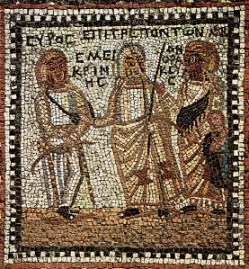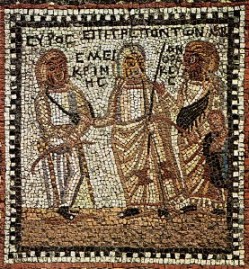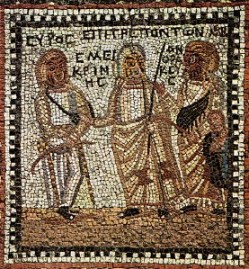You are aware of all that the excellent and much enduring Simonides has published as to the Pseudo Sinaitic Codex, abstracted from the library of the Greek monastery at Sinai, by Dr. Tischendorf. The facts are really so. And I counsel you not to continue circulating contrary statements, for you will greatly sin in foisting on the world a new MS. as an old one, and especially a MS. containing the Holy Scriptures. Injury to the Church must accrue from all this, even from the evidently numerous corrections of the MS. And that this is a new MS. I openly proclaim, both before the all · seeing God, and before men; and !further, I protest to you, Messrs. Editors, that this is a genuine work of the indefatigable Simonides. For I myself saw him with my own eyes, in February, 1840, writing it in Athos; and, owing to the death of the head of the monastery, he left the work unfinished, and went to Constantinople, taking the Codex with him, which also he delivered to the illustrious patriarch Constantius, and he sent it to the monastery in Sinai by a monk of that house, named Germanus, whose subordinate still lives in Athos to attest the writer. And the patriarch sent the Codex there, in order that the transcript might be compared with other copies of the Old and New Testament, and then be transcribed by the same Simonides, and sacredly presented to the Emperor of Russia, on the part, not of the monastery of St. Pantaleemon, according to the original intention of Benedict, but on the part of the patriarch Constantius. On this account, the hieromonk Callistratus, a wise man, and companion of the same house, undertook the comparison of it, and did compare it with other codices of the same house, by command of Constantius, the patriarch. And he, having partly corrected it, left it in the library awaiting the return of Simonides, the first calligrapher in Greece. He not coming in good time, the work was altogether neglected, and remained in the common library of the monastery for some time: until Dr. Tischendorf (coming to the monastery in Sinai, in May, 1844, and spending some days there, and having examined the MS. carefully and suspecting it to be ancient), tore off a small part of it, privately, and went his way, as if nothing had happened, leaving the rest of it in the position which it had before. He perpetrated this great wrong without scruple. Finally, coming again to the same monastery, he took also the remaining portion of the MS. with the aid of the Russian Consul, on the promise that he would return it. And they both promised to the Bishop of Sinai many and great gifts. which. in my opinion. they will never perform: because, at other times, many such promises were made by a certain Russian archimandrite, named Porphyrius, who took away many MSS. from the monastery of St. Dionysius. in Athos, and from others. and they were never fulfilled.
All these things, then, I know, being on the spot, and I declare them openly for the dear truth's sake. And I further assert, that the Codex which, per fas et nefas (SA: through right or wrong) Dr. Tischendorf abstracted, is the very same which Simonides wrote twenty - two years ago. For I saw it in the hands of Tischendorf, and recognised the work, and I first mentioned it to Simonides, who had no knowledge of the fact before. Evidently he knew not the abstraction of his work from the monastery in Mount Sinai. I read also at first this acrostic in it, «Simonides'entire work»: but, after two days, the leaf containing this formal acrostic had been removed - it being unknown, as yet, by whom this was done. I know too, still further, that the same Codex was cleaned, with a solution of herbs, on the theory that the skins might be cleaned, but. in fact, that the writing might be changed, as it was, to a sort of yellow colour.
These things then, Messrs. Editors, I have thought it my duty, unasked, to make known to you before I die-for I am an old man, and very near to death; and you, being as you are, heralds of the truth- as such you will greatly serve the truth, and those who follow truth, if you will exactly publish the contents of this my letter; or, otherwise, you will give accoun to God in the Day of Judgment. Far~well in the Lord, &c.
Your very devoted servant, and earnest
worshipper of God.
CALLINICUS HIEROMONK
In the words of The Christian Remembrancer (July, 1863, p. 203) «No testimony could be more reasonable or more explicit».
17. F. Field corrected the translation in a letter to The Literary Churchman. January lsi, 1863.





